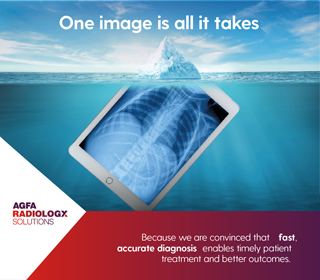Trends
3 indications auguring well for the future of pediatric PET/MRI
In pediatric care settings, hybrid PET/MR imaging combines “exquisite soft-tissue information obtained by MR imaging with functional information provided by PET, including metabolic markers, receptor binding, perfusion and neurotransmitter release data.”
So state the authors of a pediatric PET/MRI primer published online this month in the American Journal of Neuroradiology.
Lead author Christian Pedersen, MD, of Yale, senior author Ana Marija Franceschi, MD, PhD, of Northwell Health and colleagues take up considerations related to radiopharmaceuticals, imaging protocols and challenges checking PET/MR from broadening its clinical adoption in pediatrics.
They also flesh out clinical indications for which pediatric PET/MRI is either already growing or likely to do so.
Among these:
-
Lymphoma. One of the most common indications for PET imaging in pediatric oncology, lymphoma typically calls for PET/CT to track disease arc before, during and after treatments. The undesirable side effect of the serial radiative imaging is high cumulative dose, the authors point out.
Meanwhile, they add, “PET/MRI “provides excellent soft-tissue contrast and is either equivalent or superior for malignant lymph node detection. Reduction in the cumulative dose by PET/MRI vs. PET/CT has been reported to be as high as 50% to 70% in pediatric lymphoma. Further dose reduction may be achieved by lowering radiopharmaceutical doses with artificial intelligence–based algorithms, which is an area of active research and product development.”
-
Neuroendocrine malignancies. While straight PET with the radiotracer fluorodeoxyglucose F 18 (FDG-PET) is the established firstline modality for several clinical scenarios, the authors comment, PET/MR with a separate tracer, 18F mFBG, can supply excellent whole-body staging in other cases.
In fact, for certain children, 18F mFBC PET/MRI “may combine local and whole-body staging in one session, which is particularly helpful in pediatric patients who typically require anesthesia for medical imaging.”
-
Spinal conditions. In like manner, FDG-PET remains the go-to for assessing treatment response in spinal malignancies, tumor staging and follow-up. And spinal MRI remains the prime imaging choice for most noncancerous pathologies affecting the spine.
However, PET/MR should be given serious consideration for imaging spinal infections as well as questionably cancerous pathologies of the spine such as Langerhans cell histiocytosis, the authors suggest.
“Hybrid PET/MR imaging is a promising technique in pediatric neuroimaging and provides functional and anatomic information in combination with a reduction in the radiation dose, sedation time and sedation events,” Pedersen et al. conclude. “Availability and technical implementation are still limited, but the improved diagnostic capabilities are quite attractive and applicable to a wide range of oncologic and nononcologic pediatric pathologies.” Radiology Business













